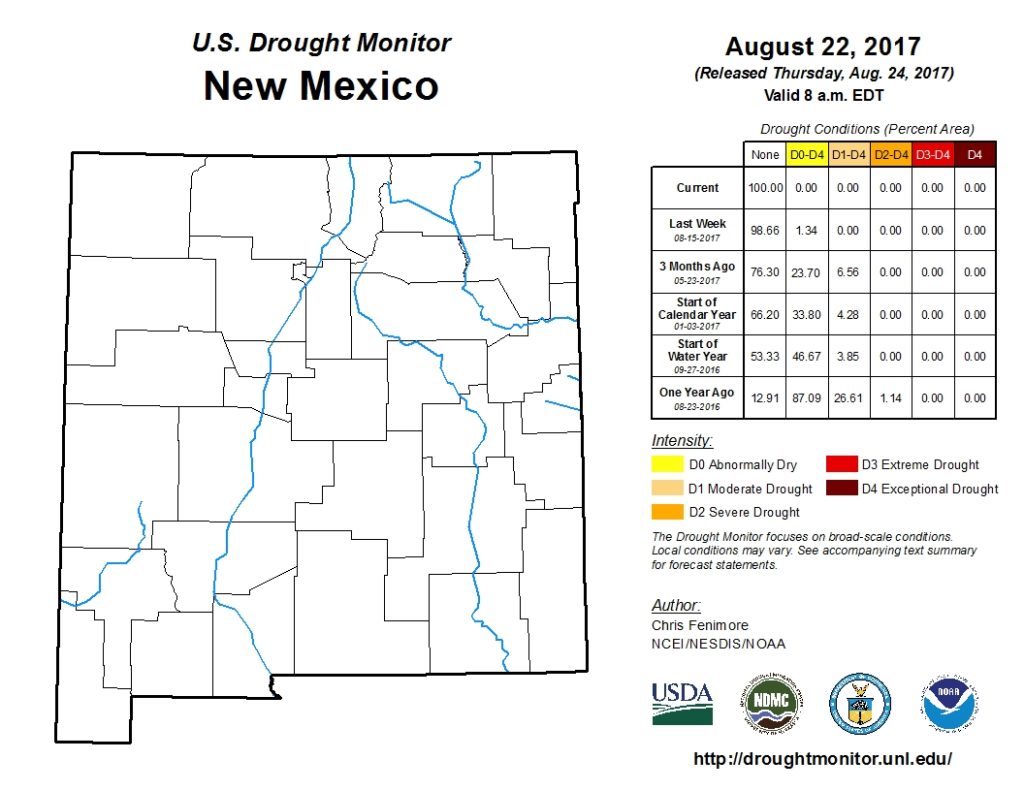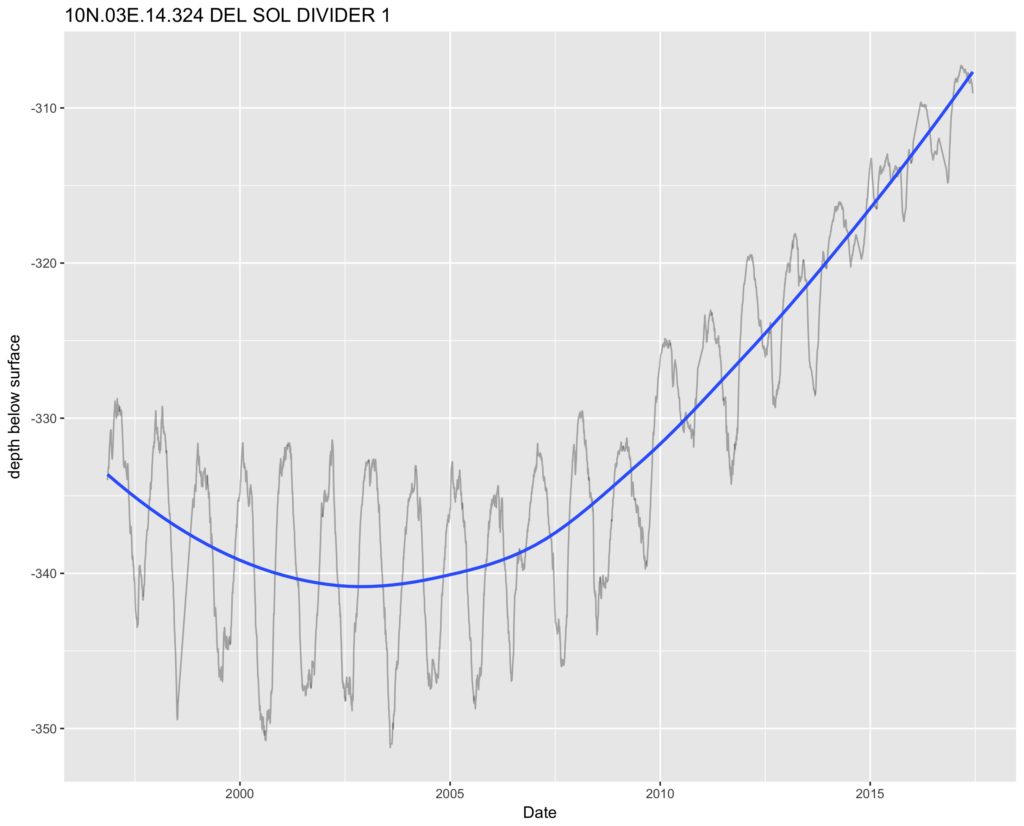Three interesting visuals for a Friday morning to help illustrate New Mexico’s improving water situation, with caveats.
One
For this first time since the federal Drought Monitor began operations in January 2000, New Mexico is completely free of drought or unusually dry conditions. Our map is clear:
This is excellent news, as Olivier Uyttebrouck noted on the front page of this morning’s Albuquerque Journal:
A healthy drought map is particularly good for ranchers who rely on rainfall to green up their range lands, said John Fleck, director of the University of New Mexico Water Resources Program. New Mexico also continues to benefit from the best river flows since 2005, which benefits irrigators, he said.
But don’t look for amber waves of grain growing on New Mexico’s fruited plains anytime soon.
The drought monitor map provides a good snapshot of short-term drought conditions, but New Mexico remains locked in a 15-year dry period, as evidenced by historically low water levels at Elephant Butte Reservoir, Fleck said.
Which brings us to….
Two
Elephant Butte Reservoir, the largest on the Rio Grande, is up 150,000 acre feet from last year at this time, but it is still only 15 percent full.

Elephant Butte Reservoir, courtesy USBR
Well that’s depressing!
In fact, the period of steep decline in Elephant Butte’s levels since the turn of the century is marked by a prolonged period of below-average flows on the Rio Grande. At Otowi, the key measurement point for Rio Grande Compact compliance, this year was just the third year since 2000 with above average flows.
But there’s an important point hidden in the data. Since 2000, New Mexico has continued to meet its obligations to deliver the required amount of water to Elephant Butte under the Rio Grande Compact. In fact, according to data from the New Mexico Interstate Stream Commission and the Rio Grande Compact Commission, we’ve over-delivered by some 240,000 acre feet.
In other words, after all water uses in New Mexico’s Middle Rio Grande Valley, we have still had sufficient water to deliver a surplus to downstream users despite 14 of the last 17 years having below average flows on the Rio Grande.
(As an aside for the wonks in the audience, one of the reasons for Elephant Butte’s decline despite receiving surplus deliveries is the use of a compact accounting method known as a “relinquishment,” which essentially allows some of that surplus to be sent downstream for farmers during dry times, rather than remaining in Elephant Butte. There have been 380,000 acre feet of relinquishments since 2000. Absent the relinquishments, we’d be running a compact surplus.)
Which brings us to….
Three
The aquifer beneath my Albuquerque home has risen 35-plus feet in less than a decade:
This is a big deal.
It has resulted from a dramatic reduction in groundwater pumping. There are two drivers:
- significant conservation success (per capita use has been cut nearly in half since 1995)
- a shift to the use of surface water as our primary supply
But, notably, we’ve been able to make that groundwater->surface water shift while still continuing to meet our delivery obligations under the Rio Grande Compact to downstream users.
As I told Olivier, “In the long term, we have to remember that this is still a dry state. The kinds of things we’ve been doing to manage in times of scarcity, we can’t let up.”
But we’re doing OK right now, water-wise.


